When the WNBA’s Las Vegas Aces opened a training facility in the spring of 2023, it marked a moment of change for the league. The 64,000-square-foot building is outfitted with practice courts, weight rooms, physical therapy spaces, and medical facilities. It’s the kind of place that’s considered a given in men’s professional sports but has long been lacking for women.
Now, after a year in operation, the Aces’ training facility has ignited a mini wave of other WNBA-specific training facilities for teams including the Seattle Storm and the Phoenix Mercury. And the Aces $40 million training center demonstrates that these spaces can be about much more than making a better basketball team.
Accommodating the female professional athlete
Throughout the league’s history, WNBA teams have had to rely on the facilities of others to do their training. Many share spaces with men’s NBA teams, or use small areas affiliated with universities. Before their new facility was built, the Aces borrowed space from the University of Nevada Las Vegas. “Just thinking about giving these women something they can call home was a very big opportunity for us,” says Susan Han, project architect for Gensler, which designed the facility.
Han says designing this as the first training center purpose-built for a WNBA team required thinking differently about what a professional sports team needed. The building has all the basketball-focused features a team could want, from its two full-size practice courts to hydrotherapy pools to a screening room for game film. But it also has spaces geared specifically for the needs of women, including some with children. (The WNBA estimates that about a dozen of its 139 players have children.) A lactation room was included, as was a nursery with a two-room nap area for young children. “Putting the family component into the player journey was one of the first things we developed with this client,” Han says.
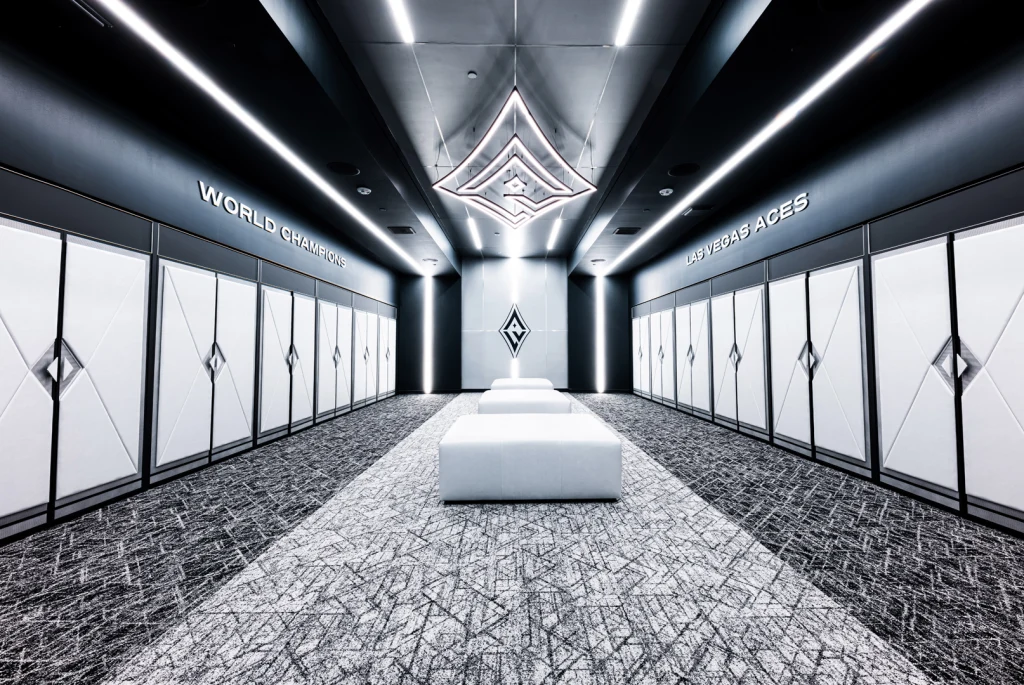
The team’s owner, Mark Davis, purchased the team in 2021 and prioritized the creation of this facility. “Mark Davis’s philosophy just as a whole is that these are the best players in the world at what they do. So at the end of the day, we want to give them every possible resource that they would need to be the most successful team in the WNBA,” says Matt Delsen, COO and CFO of the Las Vegas Aces. “There are little nuances that definitely cater toward a WNBA team or a woman’s professional sports team, and Mark was adamant about those being put in from the jump.”

While creating the Aces training facility is a step toward parity with the NBA, WNBA players have inherently distinct requirements that have shaped the design of the project. “It can be a little bit polarizing when we start to talk about how women’s facilities are different than men’s, but they really do need to accommodate a bigger variety of uses and support spaces,” says Kristin Byrd, design director for Gensler’s sports practice group.

Other unique elements include an added layer of privacy. Unlike men’s teams, where the players and most of the staff tend to be men, WNBA teams like the Aces often have mixed staffs. Gensler’s design includes more private corridors throughout the facility, particularly between the showers, hydrotherapy room, and locker rooms.
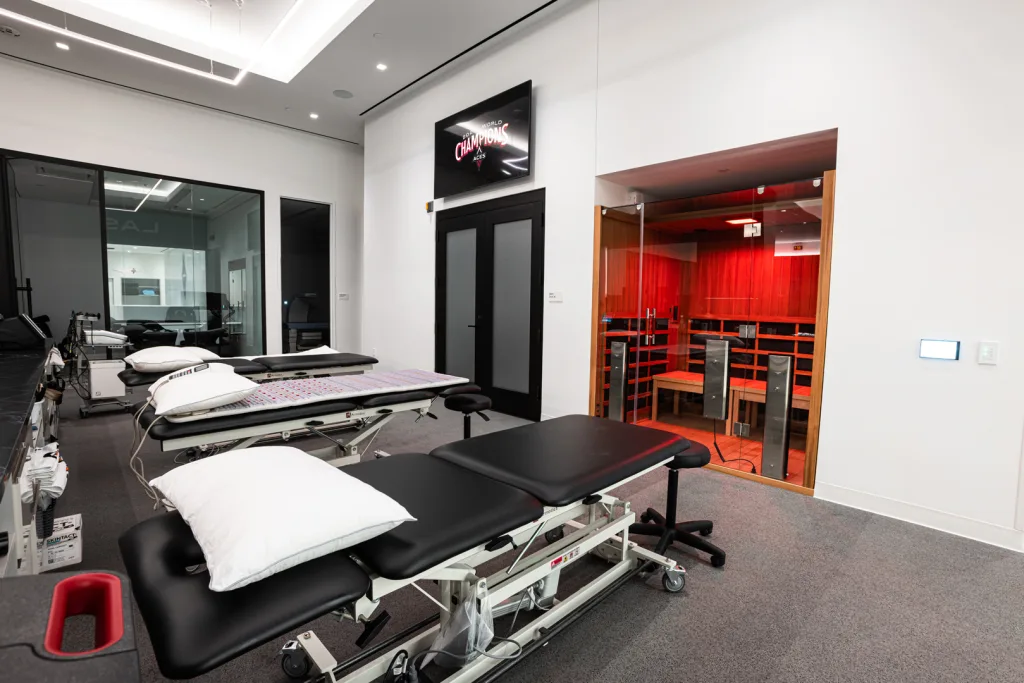
The team brought its medical staff into the design process early to ensure the facility had best-in-class treatment and physical therapy spaces to keep players in good playing shape. “Especially for players who are getting more seasoned throughout their careers, they see this as a way to lengthen their careers because there is everything that they would need from a rest and recovery standpoint,” says Delsen. “They have every tool at their fingertips to make sure that they are healthy and that the longevity of their career continues.”

The facility was also designed to give players the mental space to focus on the game. “The childcare aspect of it is a very important part. Men’s facilities are different. It’s not often that men’s professional athletes are having to do the primary childcare and bringing their child to work,” Byrd says. “Those support spaces and amenities really start to help women lessen their mental load, so they’re not having to stress out about where their kid is, who’s watching them, are they going to be done with practice on time.”
“The amount of things that women have to juggle and that are on their mind constantly require that extra support in order to function at their best,” Byrd says.
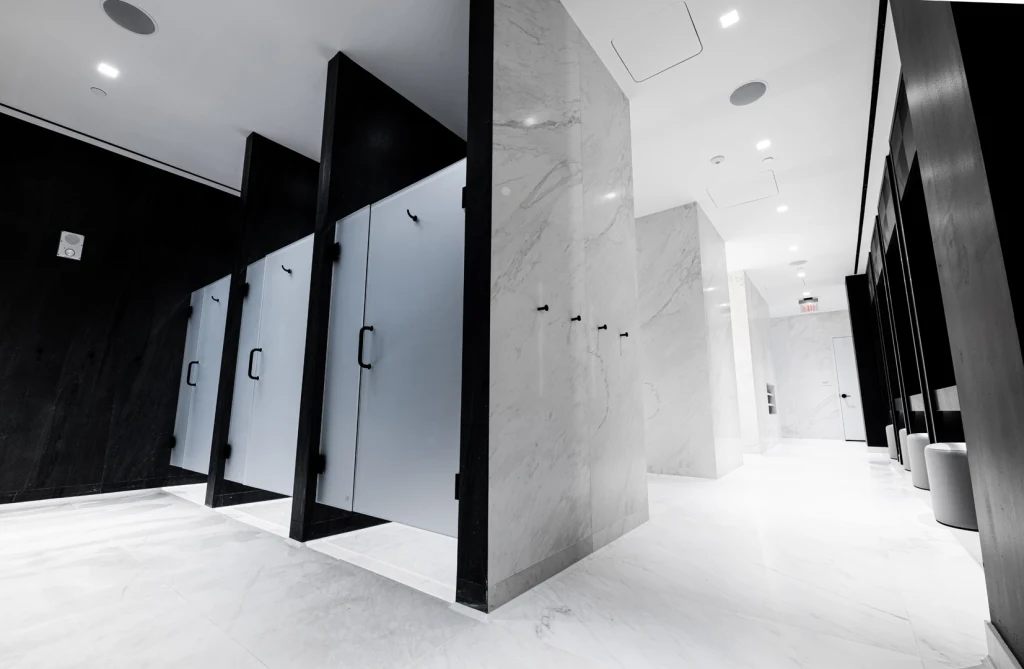
Facilities that help bridge the wage gap
Probably the most important part of the Aces’ new training facility is the way it reckons with the economic realities of playing in the WNBA. The league has an average salary of about $150,000, or roughly 10% of the minimum salary earned by players in the NBA. To augment that income and hedge against the potential of a short playing career, the facility has spaces for players to conduct meetings with agent and sponsors, record podcasts and videos, and access a broad network of team alumni. Compared to their better-compensated male counterparts, WNBA players may not be able to afford to easily access these kinds of brand-building resources.
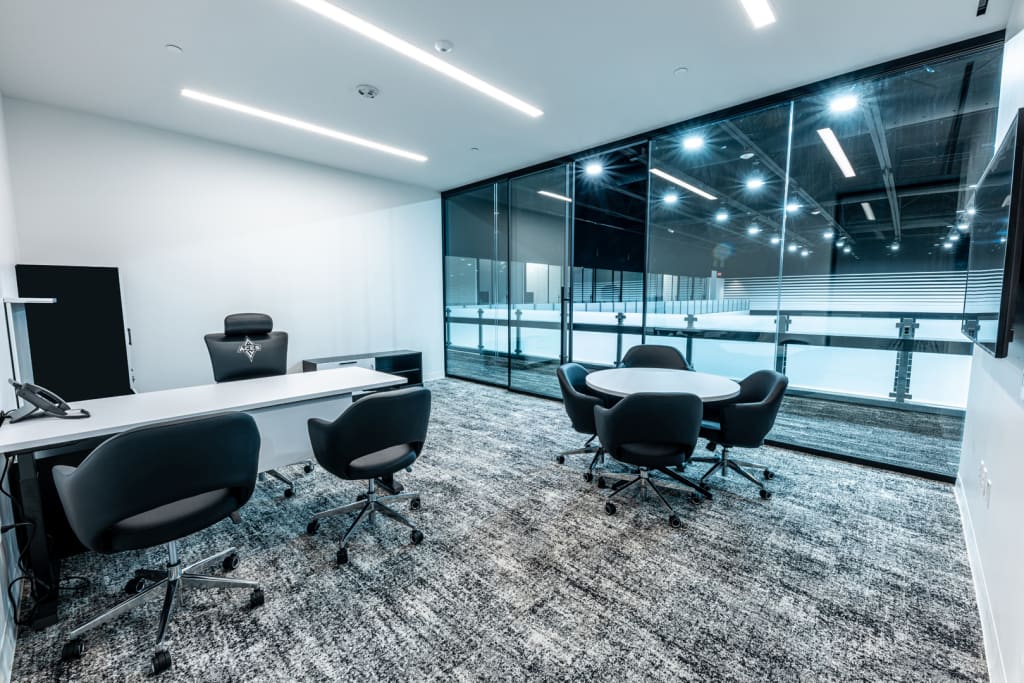
“Women have the ability to not only get the performance side right, but also make sure that they’re working on their brand or their name, image, and likeness rights so that they have a stepping stone for when they are done with being a professional athlete, and they can still continue to generate revenue based on their brand,” Byrd says. The architects pulled on Gensler’s office design expertise to make sure the facility was being thought of as a multilayered workplace for the players. “You’ve got to think about how they are almost running their own business and that is supplementing what they love to do,” Byrd says.
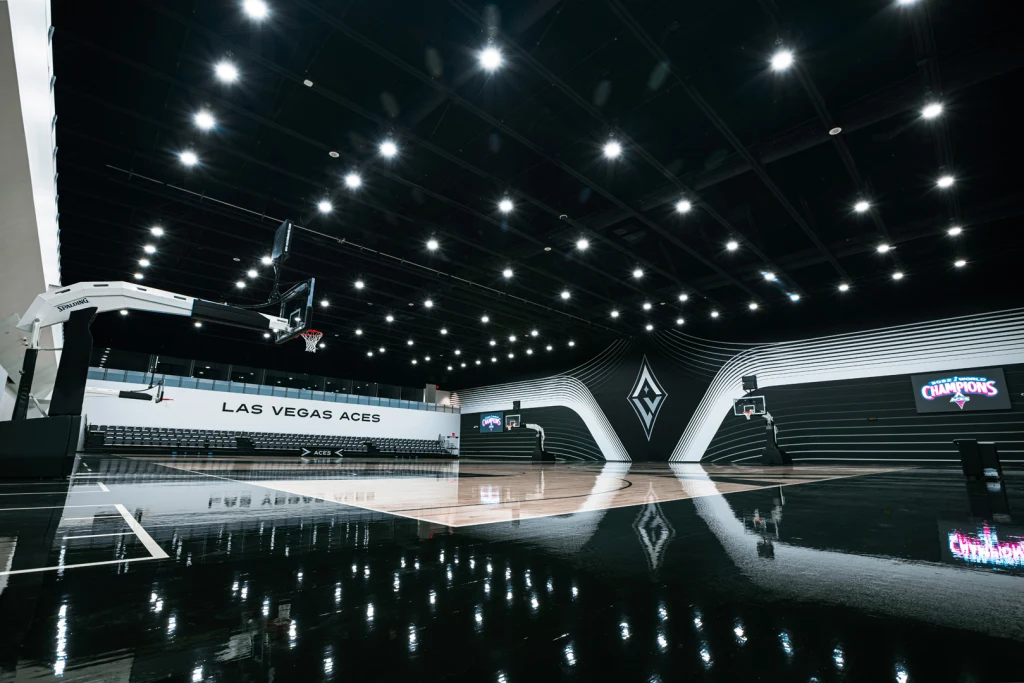
It’s something that’s been ingrained in the way the Aces organization operates. Davis insisted on part of the facility being set aside as an alumni lounge, where former players could have access to work space, team resources, and even potential post-playing careers. “What we’re trying to do is build an alumni initiative that really keeps former players engaged with the organization and potentially provide opportunities for them to continue a career in basketball off the court,” says Delsen.
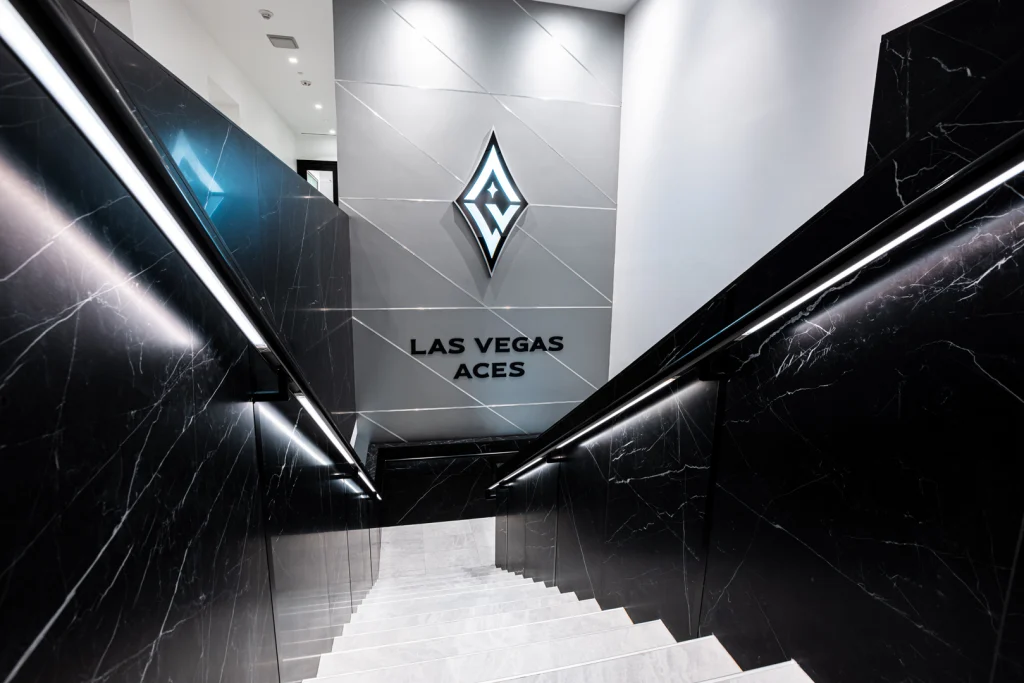
He says the facility included these kinds of resources on site to give back to the team’s players. Until the compensation for playing in the WNBA gets higher, teams will have to do more to help their players create sustainable retirement income. “It’s something that’s lacking and that we feel that we can come in and assist with,” says Delsen. “So we are making that a focus to try to assist these players in creating additional opportunities once their playing careers are over . . . It’s great to see other teams now following that path.”